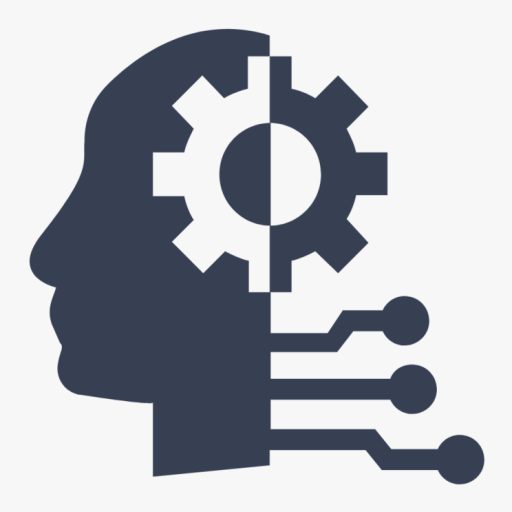Artificial intelligence is reshaping how organisations operate, automating routine tasks while amplifying the need for human strengths. Studies show tools can analyse data at scale, generate content and speed processes, yet they do not match nuanced interpersonal skill or ethical judgement.
The central question—”will business administration be replaced by ai?”—is examined here with a practical lens. This piece blends market insights, employer practice and management commentary to guide professionals and teams.
Scope covers operations, customer service, reporting, scheduling and managerial oversight that turns numbers into action. Automation highlights patterns and efficiency, but context, empathy and trust remain decisive.
Across industries, roles will shift; opportunities grow for those who pair an MBA-style degree mindset with applied AI fluency and on-the-job experience. Expect trend analysis on adoption, limits of technology and outcomes for jobs and management.
Why this question matters now: the state of business administration in the age of AI
Boards and executives now treat automation as a strategic priority across sectors. Market studies show large economic upside: McKinsey projects about $13 trillion in added activity by 2030, driven in part through labour substitution and product innovation. That prospect has pushed artificial intelligence onto corporate agendas.
Adoption is uneven. Many firms pilot automation inside administrative workflows, while a smaller number scale platform-wide systems. This patchy roll-out creates mixed impacts on jobs and routine tasks across the industry.
The dual narrative is clear. On one hand, automation offers productivity and service gains. On the other, professionals worry whether machines replace repetitive tasks and parts of their daily work.
Operationally, management shifts from manual processing to exception handling, stakeholder coordination and turning data into decisions. Entry-level and task-centric roles show highest exposure today, while employers build training, governance and policies to integrate new systems responsibly.
Those who adapt early can shape role evolution. Professionals who learn to translate outputs into strategic choices will find greater potential to influence outcomes and protect the human edge in a changing world.
What AI can and cannot do in business administration today
Artificial intelligence streamlines many routine tasks across operations, finance, HR and customer-facing functions. Scheduling, status reporting and ticket triage run faster thanks to automation and robotic process tools.
These systems free teams to focus on higher-value work that needs judgement and stakeholder management. Processes gain speed, but interpretation and communication still depend on humans.

From routine workflows to data analysis and service
AI handles calendar coordination, summary reports and first-line customer service through chatbots and RPA. That reduces manual load and shortens reporting cycles.
At scale, data analysis extracts patterns and fuels predictive analytics. Still, translating outputs into context-aware action across functions requires human review.
Decision-support rather than decision-making
Algorithms quantify risk, spot anomalies and forecast trends. They act as support tools for managers rather than final arbiters of material or ethical choices.
“Use models to surface issues and accelerate insight; hold humans accountable for decisions with legal or commercial impact.”
Where algorithms fall short
Creativity, negotiation and emotional nuance remain outside algorithmic reach. Tacit knowledge and situational awareness matter in complex problem framing.
- Customer service: escalate complex or emotional cases to human agents to preserve trust.
- Operational controls: pair automation with exception handling and clear escalation paths.
- Strategic work: humans translate data into policy, ethics and stakeholder alignment.
In short: treat automation as an assistive layer that accelerates throughput and improves experience, not as a full substitute for professional judgement. Robust review, governance and skilled oversight keep systems reliable and compliant.
Trends and forecasts shaping administrative roles
Global forecasts now link large GDP gains to smarter workflows. McKinsey estimates an added $13 trillion to global activity by 2030, lifting cumulative GDP roughly 16% and adding near 1.2% growth per year. This macro lift pushes firms to rethink roles and priorities.
Macroeconomic lift and industry disruption
Macroeconomic lift and industry disruption
Widespread adoption means around 70% of companies will use at least one intelligent system by 2030. Goldman Sachs suggests the equivalent of 300 million full-time jobs could feel impact, with some regions more exposed than others.
Job exposure, automation of functions and new roles
Job exposure, automation of functions and new roles
Exposure varies by task mix. Roles heavy on coordination, compliance checks and documentation face higher automation risk, while stakeholder management stays human-led.
- Translate GDP uplift: invest in intelligent workflows and robust data foundations.
- Reskill and map functions: create paths to AI operations, data stewardship and quality-control roles.
- Plan phased adoption: expect uneven uptake across industries and regions; prepare hybrid setups.
How consulting, finance and technology functions are evolving with AI
Consulting, finance and technology teams are reshaping roles as intelligent tools accelerate core workflows. Business schools report concrete shifts: Dartmouth’s Tuck offers AI-for-managers modules, and Wharton gives MBA cohorts ChatGPT licences plus hackathons to build hands-on experience.
Consulting: faster analysis, generative support and human-led strategy
Generative tools compress research and synthesis, cutting discovery cycles sharply. Partners still own narrative, stakeholder alignment and change leadership, using system outputs to test scenarios and refine recommendations.
Finance: transactions, detection and risk-aware processes
In finance, automated pipelines speed reconciliations and transaction work. Systems enhance fraud detection, enrich data analysis, and parse regulation to streamline compliance reviews. That shifts roles toward model oversight, validation and regulatory liaison.
Technology: code, observability and security-led operations
Development pipelines now integrate code generation, automated testing and observability tools. At the same time security leadership grows critical as threats evolve; teams need capabilities in threat intelligence, model risk management and incident response.
- Decision-support is central: managers use insights to pressure-test plans and communicate implications to clients and boards.
- Across industries, time on routine tasks and administrative service drops, while roles in orchestration, vendor oversight and ethical review rise.
- Concrete capability programmes—hackathons, experiential projects and formal courses—help professionals translate tool outputs into reliable operational practice.
“Treat tools as accelerants; keep humans accountable for high-impact judgements.”

Will business administration be replaced by AI?
Organisational roles are evolving as tools handle repetitive tasks and people take on complex judgement work. Evidence from leading schools and market analysis frames intelligent systems as decision-support rather than decision-makers.
Managerial work is changing, not disappearing: higher-order thinking as the differentiator
Management is shifting toward framing problems, setting priorities and owning outcomes. Entry-level jobs face the largest automation impact; managers focus on ethics, negotiation and creativity.
- Skills that matter: critical thinking, synthesis and clear communication.
- Less time on manual chores; more on coaching, escalation and continuous improvement.
- Leaders translate system outputs into policy that aligns with values and regulation.
Collaboration between humans and machines: redefining roles, processes and service
Design roles so systems and people complement each other. Robust governance preserves service quality and accountability at each handoff.
- Human-in-the-loop reviews for high-risk decisions.
- Checklists and thresholds to catch system limits.
- Measure impact on team wellbeing, productivity and compliance.
“Treat tools as accelerants; keep humans accountable for high-impact judgements.”
The human edge: skills that future-proof administrators and MBA professionals
Soft skills are emerging as the decisive advantage for administrators navigating rapid technological change.
Leadership now means mobilising teams, reading context and communicating trust when stakes are unclear.
Hiring managers seek concrete capabilities: stakeholder management, executive communication, conflict resolution and coaching. These skills compound with experience and help professionals rise above routine tasks.
Leadership, emotional intelligence and communication in AI-enabled teams
Emotional intelligence is the operating system for collaboration. It supports feedback cycles, resilience and productive iteration.
“Leaders who combine empathy with clear direction create teams that adapt faster and sustain performance.”
Evidence your capabilities by leading cross-functional projects, tracking measurable outcomes and reflecting on lessons learned.
Critical thinking, creativity and change management across industries
Critical thinking and creativity are signatures of value creation. Professionals who question assumptions and craft novel approaches outperform those who only follow playbooks.
Change management separates effective administrators. Orchestrating transitions, aligning incentives and keeping momentum are high-value tasks that require judgement and domain fluency.

| Skill area | What hiring managers look for | How to show it | Outcome |
|---|---|---|---|
| Leadership | Team mobilisation, decision framing | Lead initiatives, present results to execs | Faster adoption, clearer priorities |
| Emotional intelligence | Conflict resolution, feedback delivery | Mentor peers, document coaching results | Higher engagement, lower churn |
| Critical thinking & creativity | Problem framing, novel solutions | Run pilots, publish case summaries | New revenue streams, process gains |
Career advice: pursue a relevant degree or targeted credential to deepen knowledge and analytical depth. Pair that with domain field fluency to become the go-to professional who translates complexity into action.
Career playbook: building AI literacy and management capabilities now
Practical upskilling secures roles and opens opportunities. Managers and professionals should treat learning as a continual part of their career. Small, repeatable steps compound into meaningful experience.

AI tools fluency: data, analytics and decision-support for managers
Develop fluency with core tools for data exploration and analytics. Learn to test outputs, validate assumptions and use results for clearer decisions.
Specialisation and domain depth: security, customer service, operations and analytics
Prioritise a field that matches demand. Security, customer service operations and analytics offer clear opportunities across functions.
Agility and continuous learning: courses, projects, hackathons and experiential work
Join hackathons, sandbox projects and short courses to turn theory into practice. Build a portfolio of experiments and metrics that signal impact to employers.
Ethics, governance and responsible AI in business processes
Understand risk controls, bias mitigation and monitoring. Strong governance protects processes and builds trust with stakeholders.
“Signal competence with documented experiments, metrics and clear descriptions of problem framing and outcomes.”
| Action | What it shows | Outcome |
|---|---|---|
| Focused learning plan | Tool fluency and data literacy | Better questions, faster decisions |
| Domain specialisation | Security or operations expertise | Scarce roles and clearer career paths |
| Hands-on projects | Practical experience and portfolio | Hireable skills and internal promotion |
Takeaway: combine targeted courses or a degree with project experience, governance knowledge and peer mentorship to secure long-term opportunities in evolving functions and jobs.
Conclusion
Automation reshapes tasks and workflows, yet human judgement stays central in organisational life. Artificial intelligence acts as decision-support that speeds data work and routine actions.
Professionals who combine technical literacy with leadership, communication and critical thinking convert potential into concrete outcomes across industries.
Organisations should invest in people, processes and technology together and apply clear governance to keep adoption safe and value-focused. Practical steps include mapping automation, reskilling workers into higher-value roles and building multidisciplinary teams.
For practical perspective on job risk and transition, read this analysis of workplace impact. The future belongs to teams that learn fast, lead with intelligence and solve real problems in the world of work.












